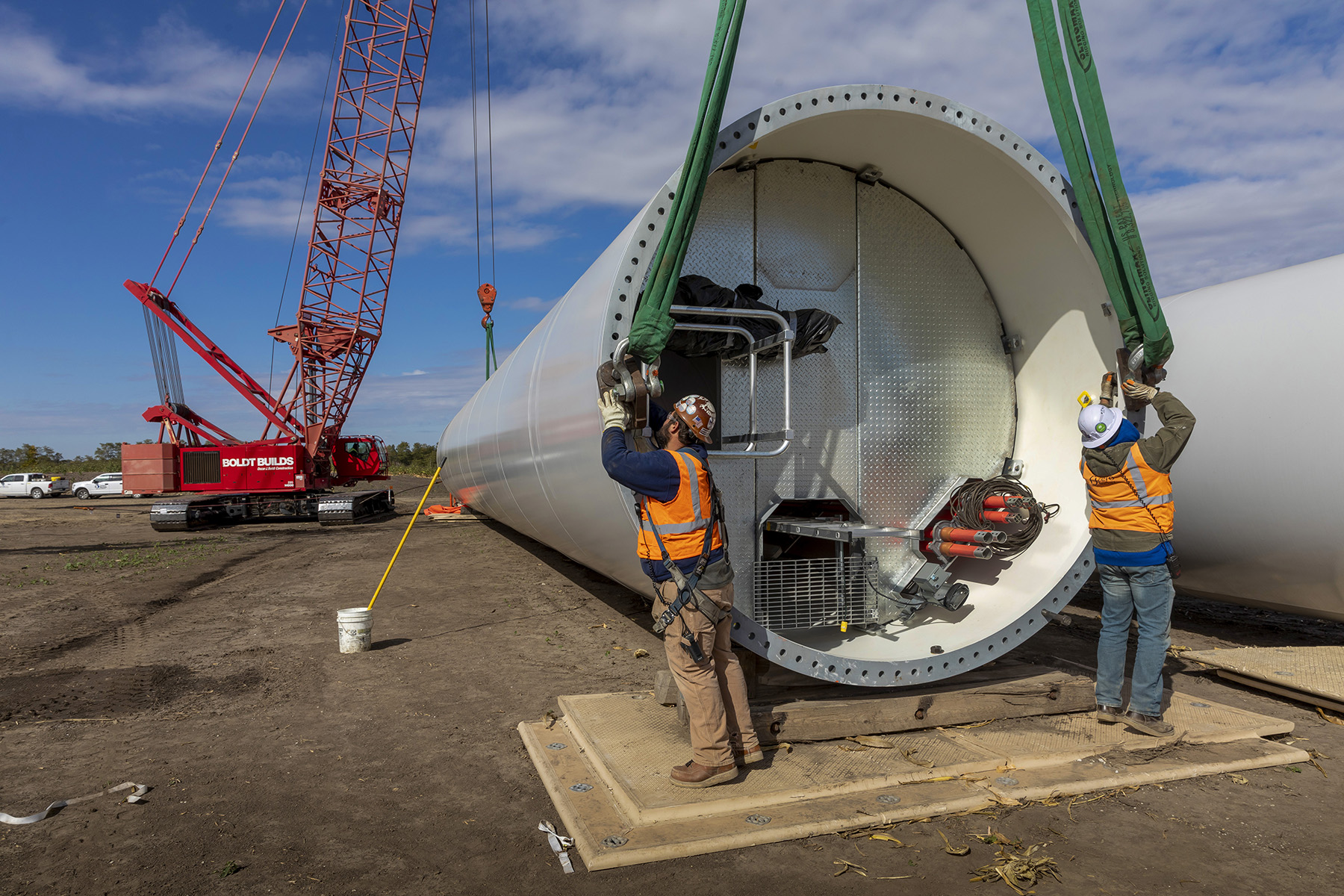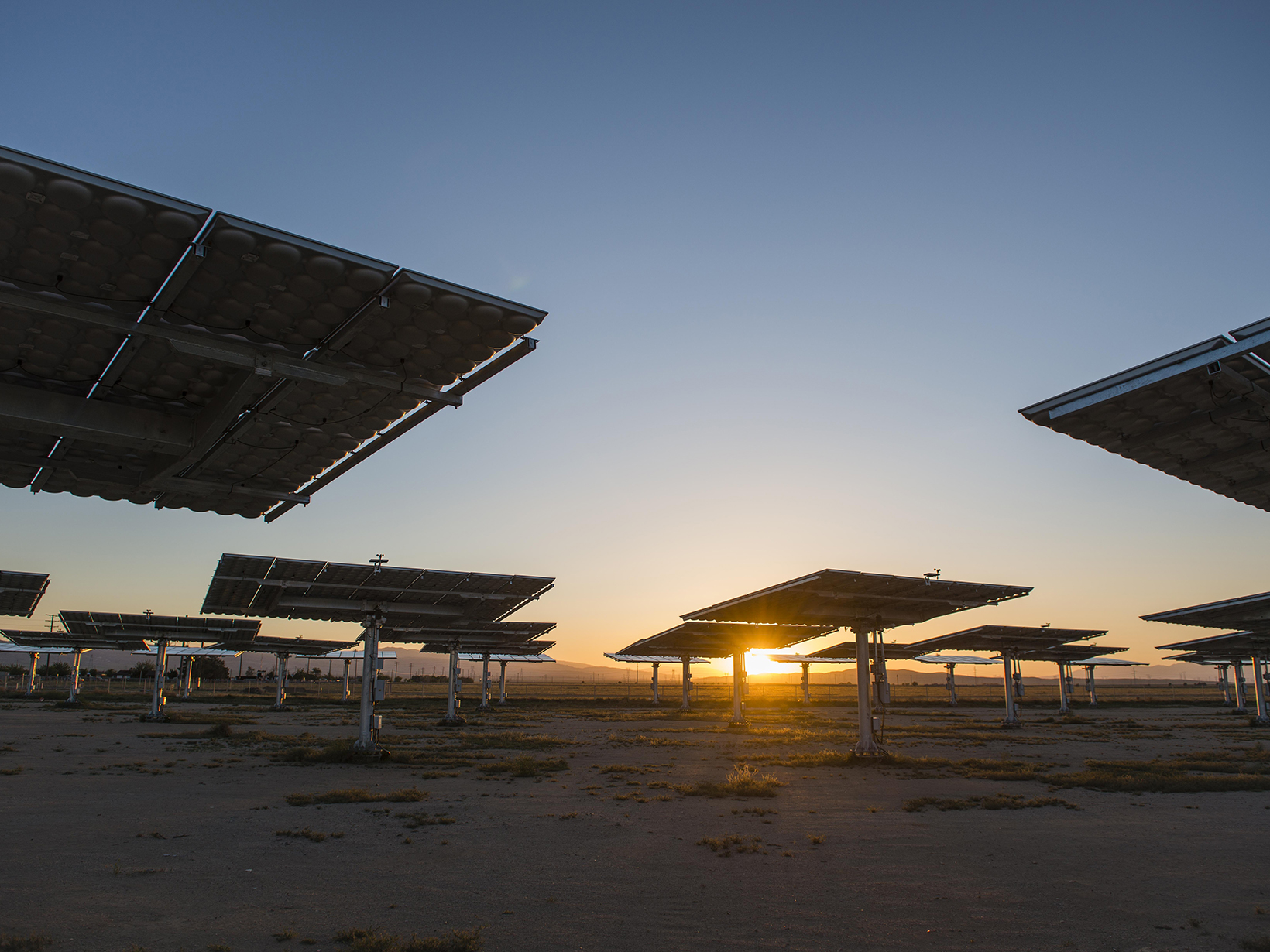Clean Energy and Climate Policies Benefit America's Economy and Communities
Research shows investments in clean energy and climate action mean jobs, security, resilience, lower costs and many opportunities.
To ensure a safer, healthier future, we must accelerate the momentum for a transition to clean energy and act big to avoid the worst impacts of climate change. And we need to do it now.
As the UN’s Intergovernmental Panel on Climate Change recently concluded, any further delay in concerted action "will miss a brief and rapidly closing window of opportunity to secure a livable and sustainable future for all.”
Thankfully, fast, bold action is as beneficial as it is necessary. It would bring opportunities for jobs, security, lower costs and community resilience.
And we are closer than ever to realizing those opportunities in the United States. With about $370 billion of clean energy and climate investments, the Inflation Reduction Act of 2022 is the most significant step toward fighting climate change Congress has ever taken. This historic action will make meaningful progress toward climate goals and unlock the promise of innovative, cleaner industries and the jobs that come with them.

Research found that nationally, investments in climate and energy would support nearly 676,000 jobs annually for 10 years.
Clean Energy and Climate Policies Support Skilled Jobs and Diversify Economic Opportunities
To quantify the benefits of passing these policies, The Nature Conservancy (TNC) commissioned BW Research to analyze the climate and clean energy provisions in the Inflation Reduction Act.
The research found that nationally, these investments would support nearly 537,000 jobs annually for 10 years. These include skilled jobs that will also help diversify economic opportunities since they come from a mix of investments across the power, agriculture and forestry, buildings, and transportation sectors.
These jobs and the overall economic activity will annually generate more than $6.8 billion in local, state, and federal government taxes and $50.9 billion in value added to the economy every year for ten years. That is a return of $1.42 for every federal dollar invested.
When combined with the long-term benefits for energy security, community resilience, and climate action, it becomes clear these investments are the right choice to put us on a path toward a brighter future.

The $138 billion in annual federal clean power incentives and investments alone would support nearly 157,000 jobs and contribute $16.6 billion to the U.S. economy each year for the next decade.
Drive Growth in a Clean Energy Economy
The far-reaching clean energy and climate investments and incentives in the Inflation Reduction Act (IRA) cover a wide range of effective approaches. In our research, we included those that aim to preserve and expand the availability of clean electricity; make our factories less polluting; promote the use of clean cars and trucks; enhance the capacity of our forests and farmland for storing carbon, increase their climate resilience and reduce wildfire risk; help U.S. companies compete when producing advanced energy technologies and utilizing cleaner manufacturing processes; improve the energy efficiency of homes and offices; and address disproportionate health risks to pollution and climate change.
With such widespread investments, the economic impacts are felt across industries, across supply chains, and across occupations. Most of the jobs are a direct result of the economic activities catalyzed by the policies in the IRA. For example, building new clean energy facilities, improving the energy efficiency of homes, and other new investments will support nearly 116,000 jobs in the construction industry annually. The efforts to improve forest health and help farmers implement more sustainable agricultural practices, which increase the carbon stored in our natural and working lands, will support over 93,000 jobs. When all of those workers buy food or make investments in their own homes, that supports other jobs. This trickle-on effect, or “induced” employment, makes a big impact and accounts for almost 40% of the total jobs.
These jobs trend toward well-paying professions. They are largely concentrated in construction and professional services industries, with 33% of the total jobs being characterized as installation and repair, and 21% being characterized as management and professional.
In addition to the economic impacts, analysis from the Rhodium Group and Energy Innovation found that by 2030 the Inflation Reduction Act could reduce emissions by 40% below 2005 levels – within reach of the emissions reductions we need to meet U.S. climate goals and international commitments. These policies support a prosperous clean energy economy while also helping to fight the climate crisis.
Energy Reliability, Security at Lower Costs
Accelerating clean energy diversifies energy supplies and generates jobs that future-proof our economy while lowering emissions.
Acceleration of clean energy and greater energy efficiency across sectors means we can dampen the effects of any single shock to the energy system. As global conflicts and politics continue to impact our energy prices, we need to consider both short-term and long-term solutions.
Incentives for clean energy—including zero-emitting nuclear, natural gas with carbon capture and storage, and green hydrogen, alongside solar and wind power—would help diversify our energy mix. With energy coming from many different sources, price spikes or supply disruptions in one will be felt less severely.
Incorporating more renewable energy into our power mix can also reduce energy costs, easing the burden of inflation on American households. Analysis from Resources for the Future found that this bill will reduce the cost of electricity by 5.2-6.7% over the next decade meaning the average family’s electricity bill will be $109-$278 lower. Investments in these climate policies can fight climate change and inflation at the same time.



